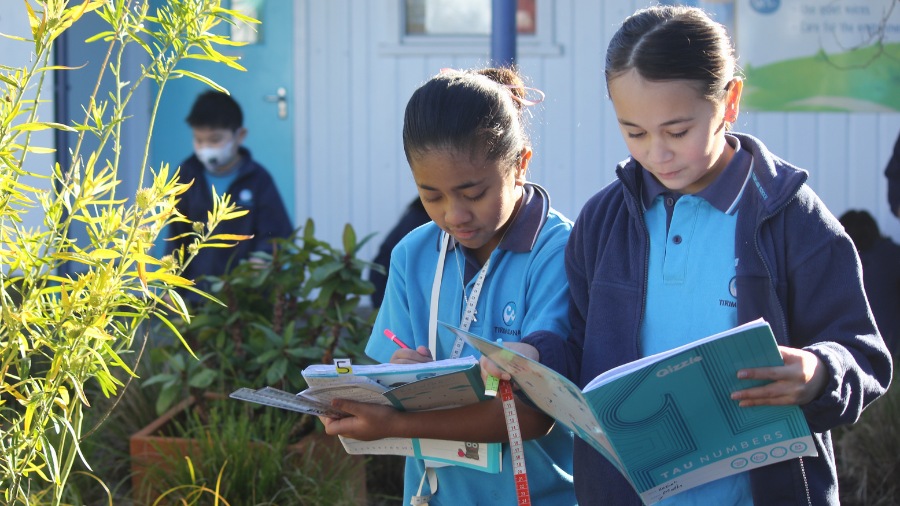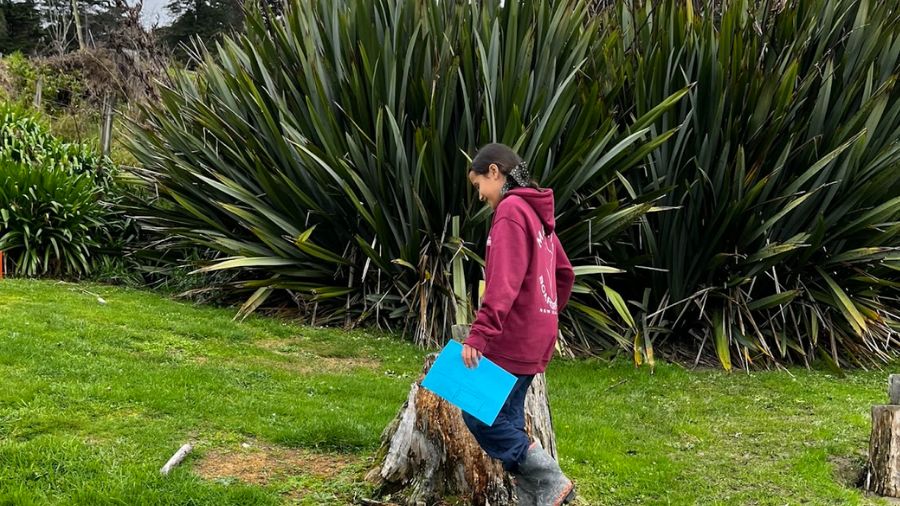Written by Annelies Judson, a trained teacher with a passion for maths and science. Annelies also writes children's poetry and picture books. Article published August 2025.
This Spotlight is part of a series highlighting environmental contexts for mathematics and statistics learning in Aotearoa primary and intermediate schools. Check our website regularly for further articles focused on different topics, strands and age groups.
Algebra and Measurement in Action
Compost bins and worm farms are cheap to set up, easy to have on site, and provide an excellent context for measurement and algebra. With opportunities to explore circular waste systems, food, gardens and animals, this Spotlight collection includes a range of activities to help bring mathematics learning to life for your students, with cross-curricular links to science, technology, social sciences, English, health and the arts.
Getting Started: Support and Resources
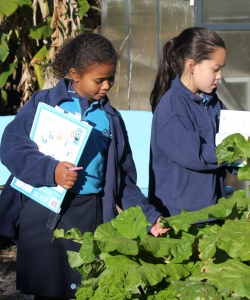
National programmes such as Enviroschools, Para Kore and Garden to Table have experienced educators who work with schools to support composting and gardening. You can also search our Providers catalogue or use the Aotearoa Composters Network to find organisations in your local area.
The Love Food Hate Waste website has pages for beginners to learn about Worm Farms, Bokashi Bins and Compost Bins, which are a good place to start for basic knowledge.
Zero Waste Zero Carbon has online modules for schools about setting up Bokashi Bins using biochar, with links to climate change and soil science in the module about carbon sinking.
Curriculum Links: Mathematics - Algebra and Measurement
The mathematics and statistics curriculum has recently been updated for Yrs 0 - 8, with another update the final document released in October 2025.
Algebra is outlined here: Years 1-3 Years 4-6 Years 7 - 8
Measurement is outlined here: Years 1-3 Years 4 - 6 Years 7 - 8
The new curriculum for Mathematics and Statistics in Yrs 9 - 10 is also available, but this Spotlight article focuses mainly on learning for Yrs 0 - 8.
Most of the key areas of algebra and measurement are incorporated into the activities below, but not all practices and knowledge statements are covered. We also encourage you to integrate other learning areas with your mathematics learning and have included ideas to support a cross-curricular approach within the activities below, and also in the final section of this article.
You can download a simplified PDF version of this article here, if you would like to print or save the activities listed below.
Activity Ideas
Planning and Design: Which bin is right for us?
Compost and worm bins have different sizes, shapes and capacities. Students could compare either existing bins on site, or online listings if you are intending to buy or construct new bins. This inquiry links really well to the technology learning area, with opportunities to review the suitability and design of existing products, or students could design and build their own bins to suit the needs of your key audience and the space available. Incorporate the arts by adding some creative flair to your bins or build literacy skills by creating advertisements for their new designs.
Measurement
Estimate and then measure the following features of existing bins, using standard or non-standard measurements:
- Size (height, width, depth)
- Capacity (volume) Hint: number of bags of compost is a good non-standard measurement option here!
- Area that the bins take up
Discuss whether different shapes of bin would have different volumes, and how you could tell which is the biggest/smallest
Consider the different lengths (perimeter) of fencing you would need around the bins depending on the placement of the bins. Ask students to consider questions such as...
Would having the bins in a long line need more or less fencing than in a square? What about other shapes? What if they were in two places? How much fencing might that require?
Estimate and record the temperature in different parts of the bins e.g. middle, at the side, different times of day, or in different weather.
Algebra
Use equations to calculate the following things to help with your planning:
- How much area the school will need if you want to purchase 1/2/5/10 more bins.
- How much compost or worm tea you would want for your school gardens, and how many bins you would need to supply this. E.g. if one bin will provide 50L of compost per year, how much will 2/3/5/10 bins provide?
- The cost for purchasing more bins, based on different combinations of bins e.g. if a worm farm costs $100 and a compost bin $250, how much will 2 worm farms and three compost bins cost?
- The volume of worm tea over different time intervals, or the volume of soil in the different bins, based on a sample of worm tea/soil.
Create a graph to show the optimum layout for the bins based on the perimeter of the area they are in. This Worms at Work resource has an activity about perimeter.
Provide instructions for how to carry out the measurement tasks and ask students to follow them. Get students to help with constructing any new bins using the instructions provided.
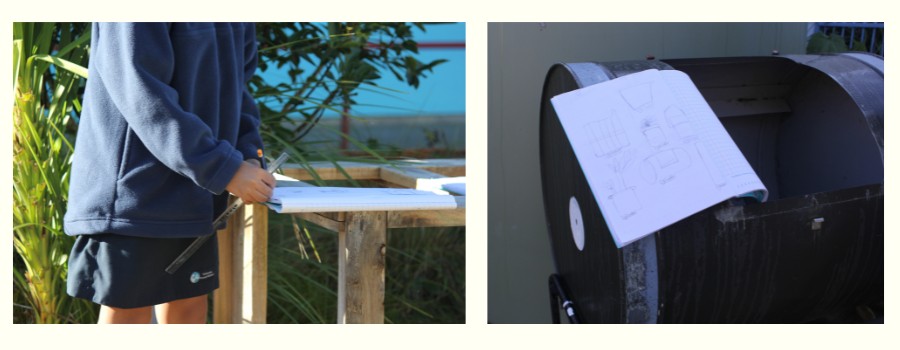
Circular Systems: Using compost in our school garden
Analysing your school’s use of resources and exploring the idea of ‘waste’ is a great context that links mathematics with other learning areas. Your compost and worm bins provide an opportunity to create a circular system, with resources staying within your school and being reused in your school gardens or donated back to the community. This links nicely with the social sciences and health learning areas, where students can relate their learning and actions to concepts of equity, community, hauora and the sustainable use of resources.
You can also strengthen science learning by investigating the process of decomposition. Use this knowledge to make sure your compost is working well and not getting too smelly! Garden to Table’s resource There’s a Party in the Compost Bin! provides a simple overview about how to get the correct ratios in your system and how to use your compost.
Zero Waste Zero Carbon has an online module about resource recovery stations, to help set up effective systems for separating food waste to use in your compost. Remember to ask for help from local environmental educators or whānau, who can help maintain compost bins and school gardens over the school holidays.
Measurement
Carry out a waste audit of the school’s organic waste: this can include food waste, but also things like paper towels, cardboard, leaf litter. Record the weight (mass) and/or volume of the different types of waste. Hint: contact your local council to find out if there are experts or educators who can support your school with a waste audit.
Calculate the amount of time (labour) required for emptying bins and managing the compost bins.
For a new bin, measure the weight (mass) of what you put in (including worms if it’s a worm bin!), and then over time, measure the weight (mass) of what is in the bin.
Write explanations about how much can be put into each bin per day/week.
Collect the liquid and or solid products from the bins over a period of time and calculate and compare the volume produced (litres or cubic cm depending on type).
Take a sample of soil from a bin and weigh it. Use this to estimate the weight of the soil in the whole bin, and then in all the bins you have.
Measure the dimensions of your school garden beds and calculate the volume of soil (in cubic centimetres or metres) needed to fill them, or how much compost you would need to top them up.
Algebra
Investigate which types of bins are best for which type of organic matter, and the capacity for each bin to break down this waste. Use this information to calculate how many bins you would require to take care of all of the school’s organic waste.
Calculate and graph the cost for different types of waste solutions for the school e.g. commercial waste removal, purchase of compost bins etc.
Graph the relationship between the weight (mass) of what is in the bin and the weight (mass) of what has been put in the bin. Note: this will require quite a lot of data collection as you will need to keep track of how much is being put in a particular bin each day/week.
Create a flow chart for the school to show which items go in which bin.
Use equations to calculate:
- How much compost or worm tea you would want for your school gardens, and how many bins you would need to supply this. E.g. if one bin will provide 50L of compost per year, how much will 2/3/5/10 bins provide?
- The volume of worm tea over different time intervals, or the volume of soil in the different bins, based on a sample of worm tea/soil
Use ratios from the Love Food Hate Waste 101 pages for Worm Farms, Bokashi Bins and Compost Bins to calculate and/or graph:
- How much liquid fertiliser, produced with worm tea or bokashi liquid, from 1//5/10 bins.
- How much liquid fertiliser you would need for your school gardens.
- How much fertiliser you could make with the worm castings from your worm bins Note: this Worms at Work resource includes lessons about ratios and castings.
- Amount of brown and green waste required for different types and numbers of bins.
- How many bins you would need for the brown/green waste your school produces.
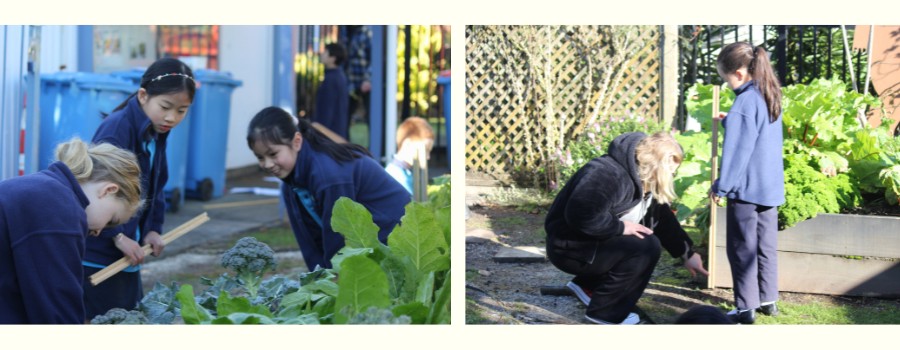
Investigating Closely: Who lives in the bins?
Once you have a functioning compost or worm system set up you can get outside and explore them more closely. A wide range of insects, fungi and micro-organisms live inside compost bins, providing the vital service of decomposition. Insects provide a great context for measurement and algebra, and statistical surveys can also be used to assess biodiversity in your school - find out more in our Statistics and Biodiversity collection.
The Science Learning Hub has a range of useful information about earthworms, including lesson plans for teachers and a page about the types of earthworms found in Aotearoa. For older students we recommend checking out the citizen science project The Great Kiwi Earthworm Survey which takes place from June - September each year.
Link this inquiry to the arts and English by encouraging students to write and illustrate stories, poetry or comic strips from the perspective of a compost resident - whether that's an earthworm, fungus or colony of bacteria. Take inspiration from Giselle Clarkson's book The Observologist or read her article in the School Journal (2024) Worms are Wonderful.
Measurement
Using standard or non-standard measures, estimate and then measure the length of different creatures in the bins.
Note: Worms are a great option as they often come in various sizes and are easy to collect, but if you are able to capture other creatures in special insect jars, these often have measurements on them to help students work out the size of whatever is inside. This Worms and More resource can help students practice measurement skills in the classroom before attempting them on live creatures!
Collect a sample of worms and weigh (find the mass) of the worms.
Collect data about the creatures in the bins on different days and at different times of day and record this in a chart.
Algebra
Using a sample of worms, create a table to calculate the mass of the worms in all the bins, or extend this to how many worms there might be in a garden/in the school field. Information about worms, including about biomass, is available in this Te Ara article.
Take a small sample of soil from a compost bin and count the number of different organisms present. Do this with larger and larger samples. Graph and look for a relationship between the size of the sample and the number of different organisms.
Research the different types of worms in Aotearoa and create a flow chart (dichotomous key) to help identify worms. Use an example of a dichotomous key from AgResearch here.
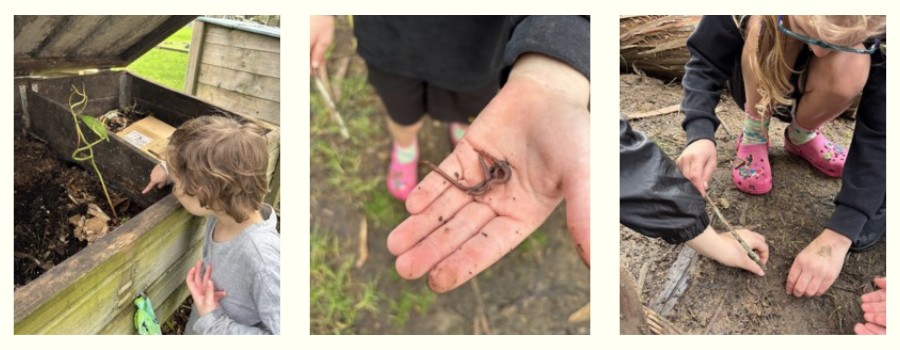
Stories and Related Resources
Te Kauwhata Community Compost Hub is an inspiring case study written by Paul Murray from Para Kore, who has supported Te Kauwhata Primary School in the Waikato to develop an effective hot composting system, in collaboration with the CarbonCycle company.
“Imagine hapū, iwi, schools, early childhood centres, community groups, local councils and businesses all collaborating to divert organic waste from landfill, reducing their greenhouse gas emissions and while creating a plentitude of nutrient dense soil - soil full of microbial life, at scale - furnishing local food growing schemes and producing an abundance of kai for the community.”
Enviro Rangers Take Action for Compost - Reefton Area School, story from Enviroschools with a range of examples that highlight students investigating, trialing and carrying out actions to improve their systems for collecting organic waste and composting.
“We had a big brainstorm of things we’d like to change. The ideas we came up with were making signs, getting fruit scrap buckets for seniors as well as monitors, installing a compost bucket on the senior side of the school for the fruit scraps and organic waste, designing and making a bigger composting system to process all the organic waste, and a reward system for reinforcing the use of the organic food scraps bucket. We really liked the idea of a worm farm but thought we could save this action until we had a sturdy composting process in place.”
Earth Dreamers, for ākonga in Years 7 - 8 and linked to Te Ao Tangata | Social Sciences curriculum, with an inquiry focus that can easily be adapted for younger or older ākonga. We highly recommend this resource, based around mātauranga Māori and our local Aoteaora context, with links to engaging questions, videos, articles and books for topics such as soil, circular economies, regenerative farming, climate change and our connection with nature.
The Future of Growing Kai by Arihia Latham, School Journal 2023 (Level 2) provides an opportunity to support literacy and mātauranga Māori within this learning context.
Trees, Seas, and Soil from Connected Journal 2020 (Level 3) includes information about soil as a carbon sink.
Worms are Wonderful by Giselle Clarkson, School Journal 2024 (Level 3).
Kiwi Kai online tool is designed for year 5–8 students, introducing them to sustainability issues encountered in farming and food growing.
You may also like to read our related Spotlight articles with links to the updated mathematics and statistics curriculum:
Exploring Biodiversity through Statistics Investigations
Measuring the Mighty: Maths Adventures in Kauri Education
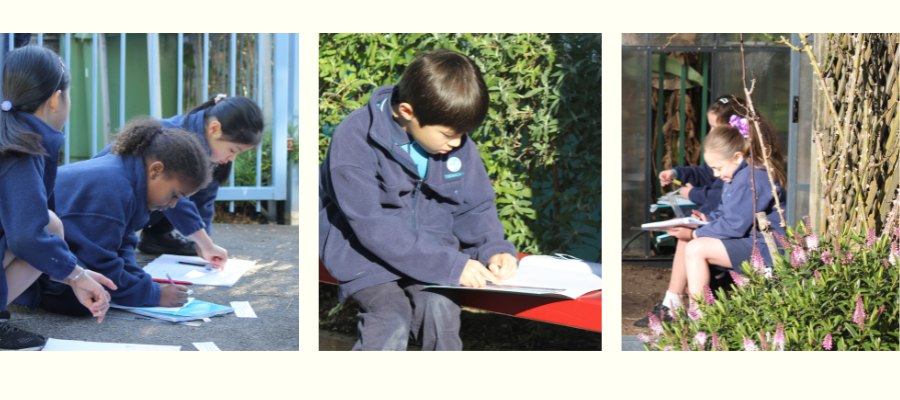
Image Acknowledgments
Huge thanks to Annelies Judson for contributing the images used in this article. All images are used with permission from the young people and schools involved.
Author Bio
Annelies Judson is a trained teacher with a passion for maths and science. She also writes children's poetry and picture books. You can find out more about her at anneliesjudson.wordpress.com, or contact her at annelies.judson.writer@gmail.com.
A printer-friendly PDF version of this Spotlight article can be downloaded here.

